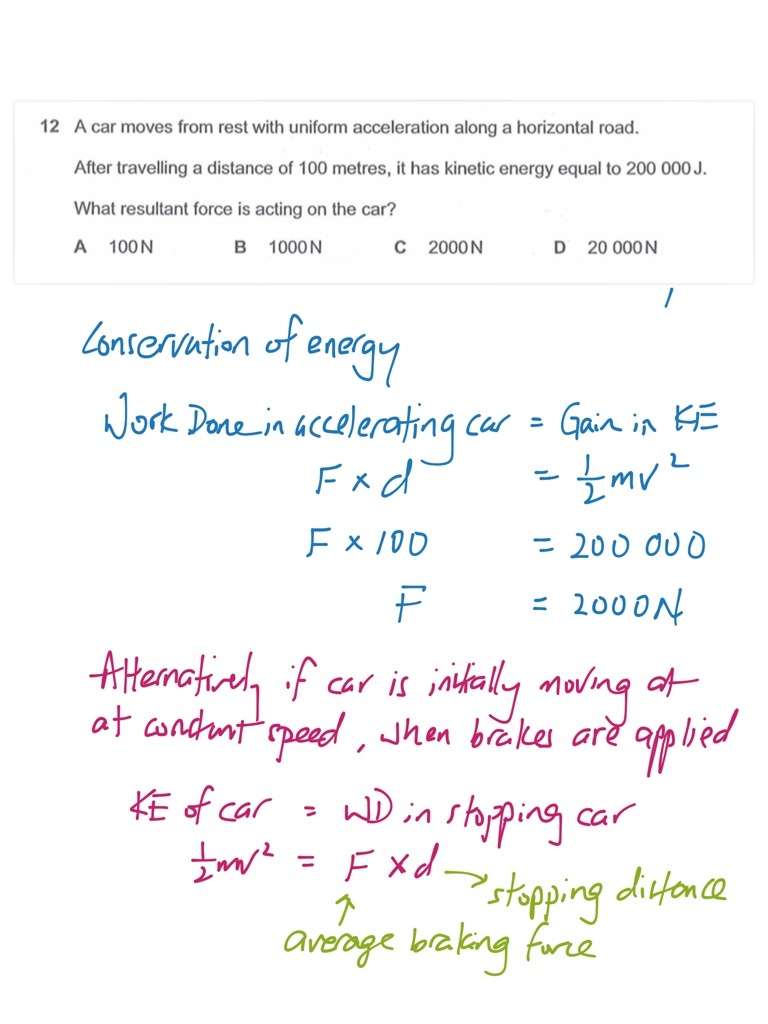Four bars, all exactly the same size, are each placed with one end in boiling water.The times taken for the temperature of the other end to increase by 2 oC are measured.
| Material of bar |
Time for 2oC rise / s |
| Aluminium |
10 |
| Copper |
5 |
| Cork |
800 |
| Styrofoam |
1200 |
To make a large metal tank with the least heat loss, which materials should be used for the tank and its insulation?
|
Tank |
Insulation |
| A |
Aluminium |
Cork |
| B |
Aluminium |
Styrofoam |
| C |
Copper |
Cork |
| D |
Copper |
Styrofoam |
Solutions: Option B
This question can be a bit tricky. It depends on which approach you view the question. Simply using conduction will be a much easier way to get the answer. The hint to use conduction is from the first paragraph. Time taken for temp of the other end to increase by 2 oC is about conduction.
To build such a tank, metal (aluminium or copper) has to be used and insulation on the external wall (cork or styrofoam).
To contain boiling water with least heat loss, both tank and insulation have to be good insulator (poor conductor) to reduce heat lost to surrounding. Hence tank should be aluminium and insulation should be styrofoam (option B)
On the other hand, if you approach the question in term of heat capacity, it will be a bit tedious and you do not have the values.Firstly, if aluminium takes a longer time to rise by 2 oC, it has a higher specific heat capacity. But you cannot merely look at specific heat capacity. You have to look at heat capacity as the mass of the container is important.
Copper: Density = 8940 kg/m3 and specific heat capacity = 400 J/kg.K
Aluminium: Density = 2700 kg/m3 specific heat capacity = 900J/kg.K
Assumptions: Volume of copper and aluminium are the same (same shape of container) say 0.02 m3, Initial temperature of metal is 30oC
Considering the amount of thermal energy gained from water as metal temperature reaches 80oC
Heat lost by water = heat gain by metal
Copper
Mass of copper = 8940 x 0.02 = 178.8 kg
Heat lost be water = heat gained by copper = mcθ = 178.8 x 400 x (80-30) = 3576000 J
Aluminium
Mass of Aluminium = 2700 x 0.02 = 54 kg
Heat lost be water = heat gained by aluminium = mcθ = 54 x 900 x (80-30) = 2430000J
From the calculation, it is obvious that the aluminium gains lesser thermal energy from the water, hence water will remain warmer compared to when using copper. Hence using this approach, it is still Option B. But important to know that you have to consider heat capacity [C], not specific heat capacity (c). [ C = mc]











































